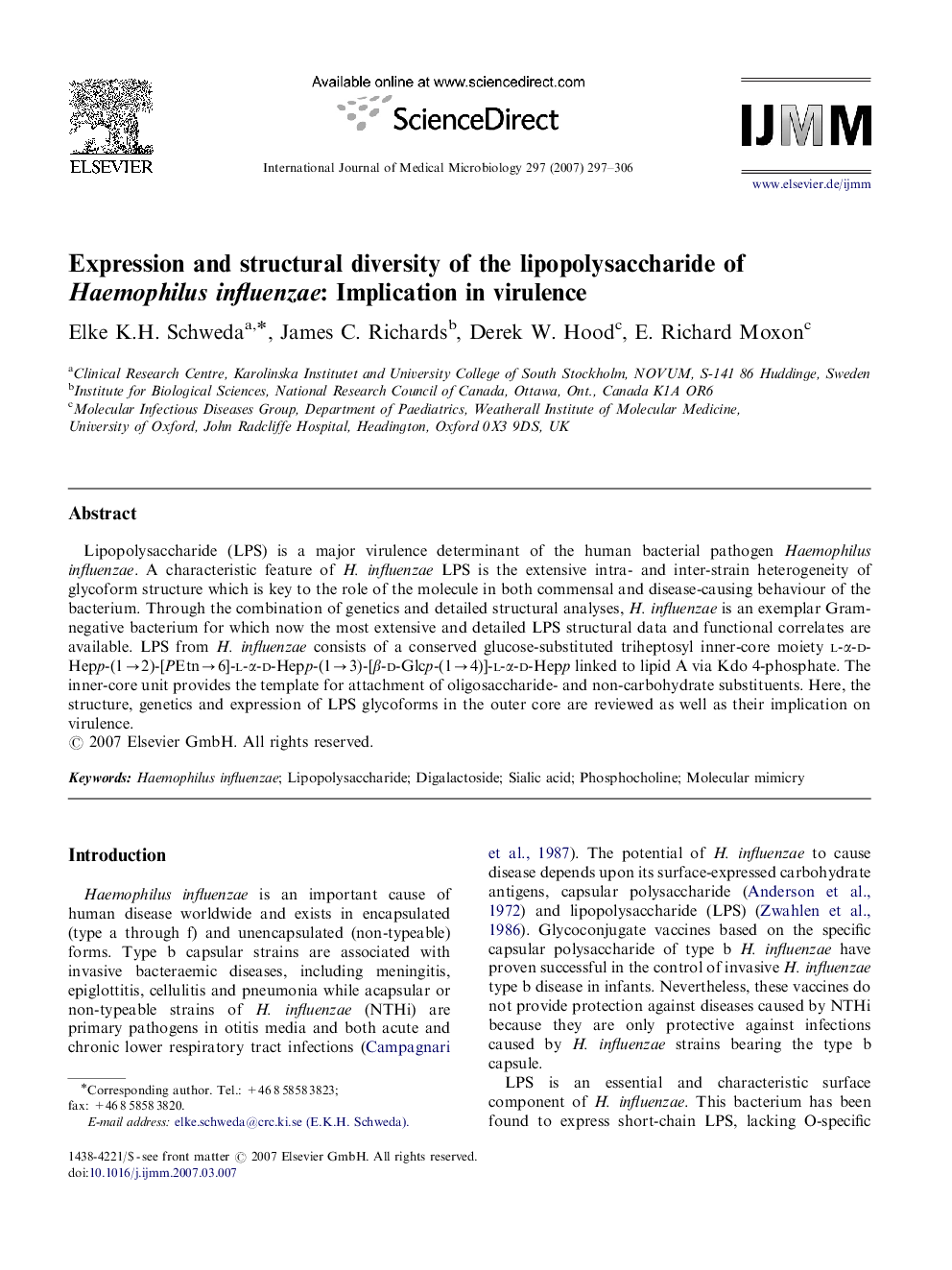| Article ID | Journal | Published Year | Pages | File Type |
|---|---|---|---|---|
| 2054546 | International Journal of Medical Microbiology | 2007 | 10 Pages |
Lipopolysaccharide (LPS) is a major virulence determinant of the human bacterial pathogen Haemophilus influenzae. A characteristic feature of H. influenzae LPS is the extensive intra- and inter-strain heterogeneity of glycoform structure which is key to the role of the molecule in both commensal and disease-causing behaviour of the bacterium. Through the combination of genetics and detailed structural analyses, H. influenzae is an exemplar Gram-negative bacterium for which now the most extensive and detailed LPS structural data and functional correlates are available. LPS from H. influenzae consists of a conserved glucose-substituted triheptosyl inner-core moiety l-α-d-Hepp-(1→2)-[PEtn→6]-l-α-d-Hepp-(1→3)-[β-d-Glcp-(1→4)]-l-α-d-Hepp linked to lipid A via Kdo 4-phosphate. The inner-core unit provides the template for attachment of oligosaccharide- and non-carbohydrate substituents. Here, the structure, genetics and expression of LPS glycoforms in the outer core are reviewed as well as their implication on virulence.
